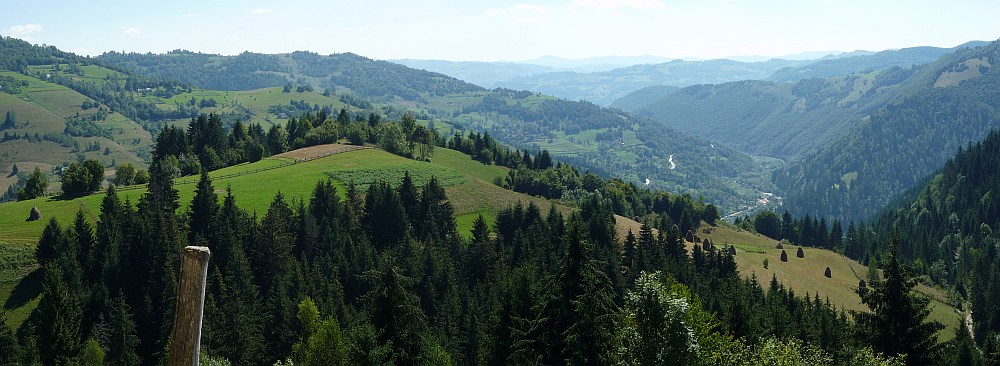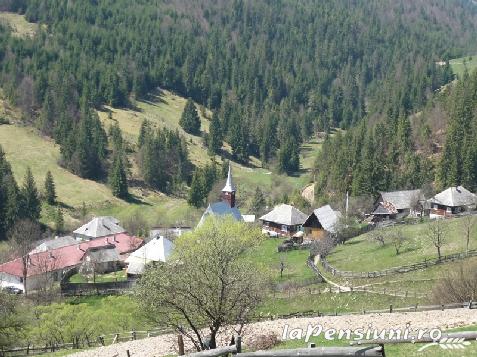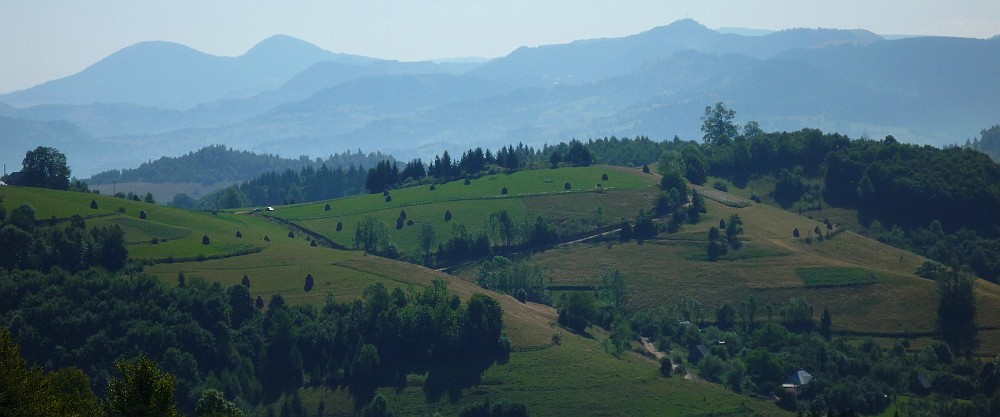Vadu Moților
Vadu Moţilor (deprecated Săcătura or Vadul Moţilor; Hungarian Aranyosvágás ) is a town in Alba county in Transylvania, Romania.
Geographical location
The community Vadu Moţilor with its twelve villages smaller hamlets and isolated farms extends (about 1-8 km from the municipal center ) between the Bihor Mountains and the Muntele Mare massif in the northwest of Alba County, in the center of the Apuseni Mountains. At the mouth of the river in the Neagra ARIESUL Mare - a source of the river Aries - and the National Road ( Drum National) DN 75, the place is about 12 kilometers northwest of Câmpeni ( Topesdorf ); the county capital Alba Iulia ( Charles Castle ) is located about 90 km (59 km distance) away to the southeast. Vadu Moţilor located in the historic Pimp country.
History
The old name of the place Săcătura ( " drought " ), points to a drought caused by clearing. Originally, the site belonged to the 1673 first mentioned large community Raul Mare (Hungarian Nagyaranayos ), which included the settlements in the valley of ARIESUL Mare. 1770 the place was first mentioned under the name of the county Săcătura Torda - Aranyos. Since 1968 the City of Săcătura Vadu Moţilor (such as " ford of the Pimp " ) has been renamed.
The main occupation of the population are the agriculture and forestry, timber processing and livestock.
Population
1850 lived on the territory of the present municipality of 1,339 inhabitants. 1,333 were Romanians and six Roma. 1956, with 2340 having the largest population - and at the same time the Romanians - registered. The highest number of Hungarians (17 ) in 1966, the Roma (10 ) 1930 determined. In addition, in 1910 and 1941 per one resident described as German. As of the 2002 census were on the territory of the municipality 1,558 people - consistently Romanians - registered.
Attractions
- The wooden church Sf. Arhanghelii Mihail şi Gavriil in eingemeindeten village Lăzeşti - called by the locals at Gura Negrii - built in 1701 and 1878, rebuilt, now covered with a tin roof, is a listed building ( in the new list of the Romanian Ministry of Culture (2010), the village is Lăzeşti the community Scărişoara assigned ).
- The Village Museum in Vadu Moţilor, established in 2006 in the former school building in the village.
- The farmhouse No. 18 built in the 18th century in Vadu Moţilor, is a listed building.
- On the territory of the municipality, numerous vortex washes were (mainly for washing wool ) and water mills, of which five or even one is in operation.
- The nature reserves Cheile Pojorâtei, Pădurea Dodul Râului and Piatra Zebrii.
Pictures
View in Vadu Moţilor
The wooden church of Lăzeşti
Water mill and swirling water plant in Remetea, Kr Harghita










